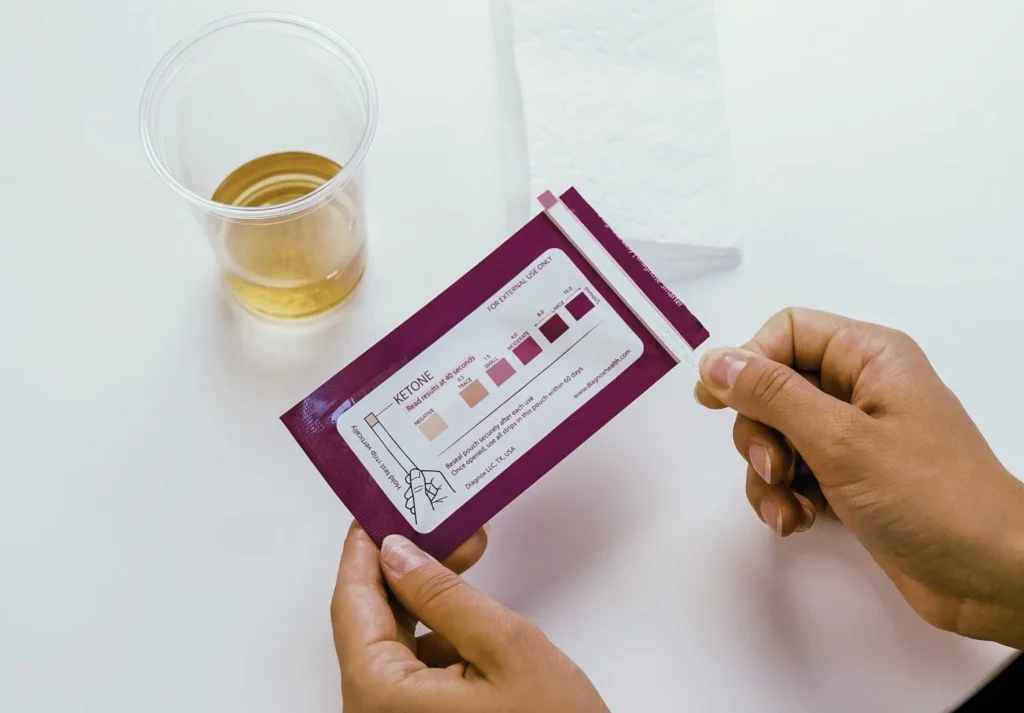Diagnostic test for ketonuria refers to the presence of ketone bodies in urine, often associated with metabolic conditions such as diabetes and severe insulin resistance. It serves as a critical indicator of impaired glucose metabolism and fat oxidation, necessitating accurate diagnostic methods for timely intervention.

Pathophysiology of Ketonuria in Severe Insulin Resistance
Severe insulin resistance (IR) disrupts glucose uptake in peripheral tissues, leading to increased lipolysis and hepatic ketogenesis. This process results in excessive ketone body production, including acetoacetate, beta-hydroxybutyrate, and acetone, which accumulate in the bloodstream and subsequently excrete through urine.
Key Diagnostic Tests for Ketonuria
1. Urine Ketone Strip Test
- Method: Uses nitroprusside reaction to detect acetoacetate.
- Advantages: Inexpensive, rapid results, non-invasive.
- Limitations: Does not measure beta-hydroxybutyrate, prone to false negatives in ketoacidosis.
2. Blood Ketone Testing (Beta-Hydroxybutyrate Measurement)
- Method: Finger-prick blood test analyzing beta-hydroxybutyrate levels.
- Advantages: More accurate than urine tests, detects early ketoacidosis.
- Limitations: Higher cost, requires specialized devices.
3. Gas Chromatography-Mass Spectrometry (GC-MS) Analysis
- Method: Identifies and quantifies ketone bodies with high precision.
- Advantages: Highly sensitive, used for metabolic disorder assessment.
- Limitations: Time-consuming, requires laboratory facilities.
4. Serum Anion Gap and Arterial Blood Gas (ABG) Analysis
- Method: Evaluates acid-base balance by measuring anion gap and bicarbonate levels.
- Advantages: Detects ketoacidosis, provides systemic metabolic insights.
- Limitations: Requires venous/arterial blood draw, not specific for ketonuria alone.
Role of Insulin Resistance in Ketone Accumulation
Patients with severe insulin resistance may exhibit prolonged ketonuria despite hyperinsulinemia. This phenomenon is observed in conditions such as:
- Type 2 Diabetes with Ketoacidosis (DKA-HHS Overlap Syndrome)
- Genetic Insulin Resistance Syndromes (e.g., Lipodystrophy, Rabson-Mendenhall Syndrome)
- Endocrine Disorders (e.g., Cushing’s Syndrome, Acromegaly)
Differential Diagnosis of Ketonuria
Ketonuria is not exclusive to diabetes; it can result from:
- Starvation Ketosis – Prolonged fasting or low-carbohydrate diets.
- Alcoholic Ketoacidosis (AKA) – Excessive alcohol consumption disrupting metabolic balance.
- Inborn Errors of Metabolism – Disorders such as maple syrup urine disease.
Clinical Implications and Management
- Confirmatory Testing: When urine strips indicate ketonuria, blood ketone measurement is recommended for accuracy.
- Addressing Underlying Insulin Resistance: Treatment includes lifestyle modifications, pharmacotherapy (e.g., metformin, GLP-1 receptor agonists), and in severe cases, insulin sensitizers or bariatric surgery.
- Monitoring and Follow-Up: Regular assessment of ketone levels, glucose control, and metabolic markers ensures effective disease management.